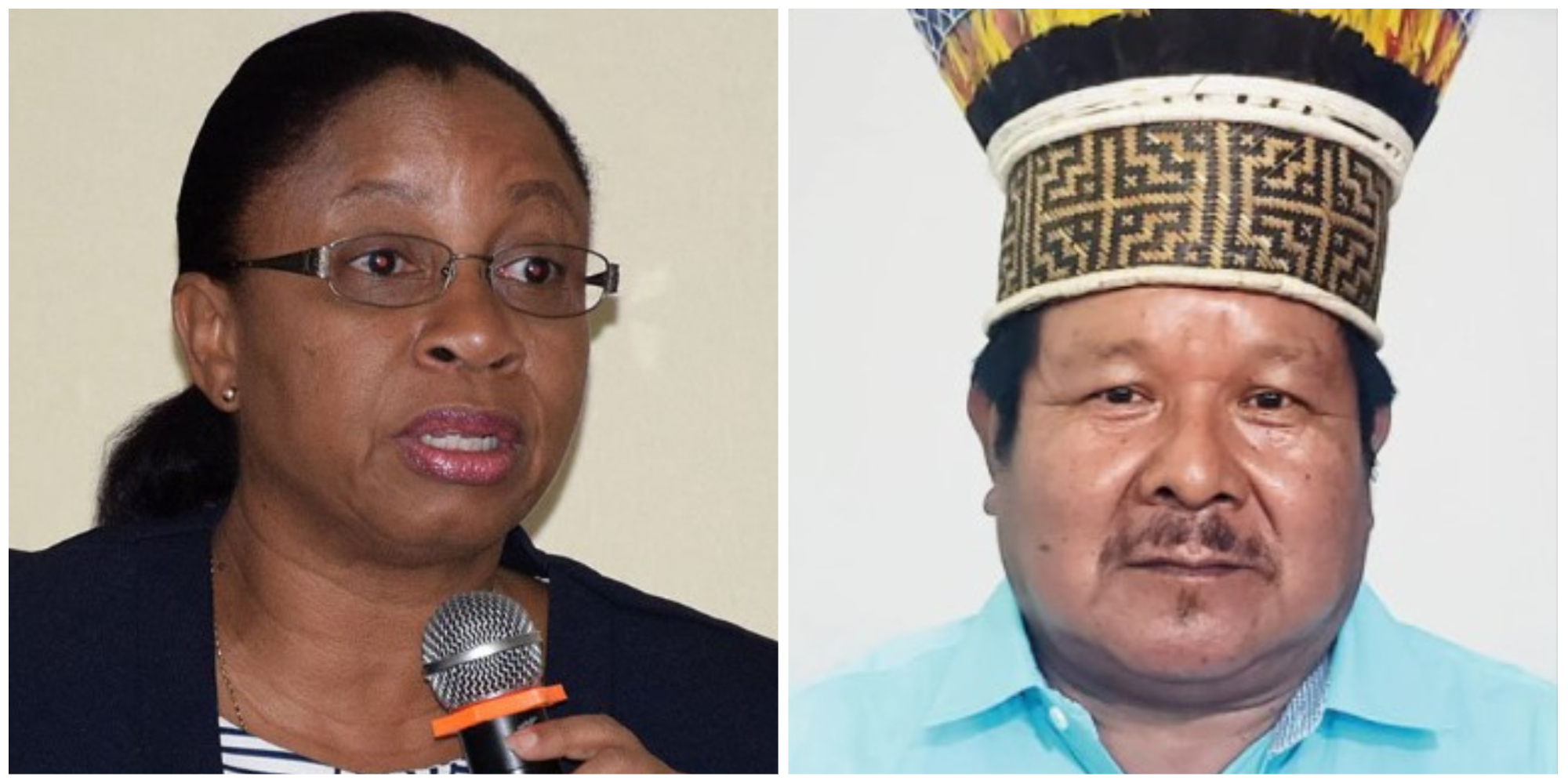
The Akawaios and Arecuna, two groups of indigenous Guyanese, have welcomed the first-of-its-kind ruling, handed down by Chief Justice (ag) Roxane George on Friday, confirming their claims to legal recognition of their traditional and ancestral lands.
This ruling marks the end of a five-year wait by the indigenous peoples of the Upper Mazaruni, Region Seven for a decision in their 24-year legal battle.
But while relieved by the decision in their favour, the indigenous peoples of the Upper Mazaruni have indicated their intention to appeal parts of the ruling for purposes of ascertaining clarity.
They were represented on Saturday at a press conference hosted by representatives of the Upper Mazaruni District Council (UMDC) and the Amerindian Peoples Association (APA). Also present was attorney Nigel Hughes.
According to Chairman of the UMDC Mario Hastings, the ruling has huge implications for other indigenous communities in Guyana.
He said while the indigenous people are victors, in this case, they remain concerned that the Chief Justice did not elaborate on precisely what it means to have communal title and what she meant by the exclusions to these titles.
As a consequence, Hastings said: “We plan to appeal to the Court of Appeal on the portions of the ruling that leave room for the government to continue infringing on our communal land title. To that end, we look forward to reading the judge’s written ruling when it is released.
“This ruling vindicates what we have always known, that the Akawaio and Arecuna peoples of the Upper Mazaruni have lived in and customarily owned and managed our traditional lands for generations. These are our lands and our homes. The ruling means that we will be better able to protect our territory for the benefit of our future generations,” Hastings said.
He reasoned that communal title affirms their rights to carbon credits generated on their land said the government must seek to obtain their consent prior to projects it intends to undertake involving these credits.
In addition, the Chief Justice confirmed that several parts of the Amerindian Act 1976 were unconstitutional.
Although that Act has since been replaced with the Amerindian Act 2006, Hastings noted intentions too to carefully review the Amerindian Act 2006 to determine whether the Chief Justice’s ruling has any implications for the current Amerindian Act.
The government has already noted its intention to revise the Amerindian Act by engaging Guyana’s indigenous communities in a participatory process.
“It is our understanding that, in light of the Court’s ruling, government agencies such as GGMC and GFC do not have authority to issue any concessions in our communal lands without the express permission of our communities. We intend to write to various government agencies to formally notify them of this position.”
While handing down her ruling at the Demerara High Court, the Chief Justice found that while the Akawaio and Arekuna Amerindians have rights to the land, they do not have exclusive rights, since there are also non-Amerindian peoples living on the said land.
The plaintiff in the 20-year-old case was Van Mendason on behalf of all the members of the Akawaio and Arekuna Amerindian communities in the Upper Mazaruni District. The named defendant is the Attorney General of Guyana.
The genesis of the case stems from a 1967 decision of the Government of Guyana to institute an Amerindian Lands Commission, tasked with mapping and suggesting titles to be issued to Indigenous communities.
In 1991, the title was granted individually to each community, though they had requested to hold collective title to their traditional territories.
The villages of Paruima, Waramadong, Kamarang (Warawatta), Kako, Jawalla and Phillipai in the Upper Mazaruni have long sought legal title over the area defined by the 1959 Amerindian District as one Akawaio/Arekuna district.







